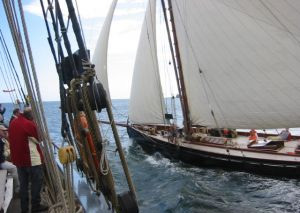Sell my car in Plymouth

Plymouth is known as the place where the Pilgrim Fathers departed for the New World and as the namesake of Plymouth County in Massachusetts, U.S.A. But Plymouth is much more than these; if you look closer, you'll see that it's a city that has a rich and colourful past and has played a big role in Britain's history. You'll also observe that it has a thriving economy, which is supported by different industries including the defence, retail, health, education and engineering sectors.
Recent studies done by the National Health Service and the Office for National Statistics show that Plymouth is slightly behind its neighbours when it comes to employment rates, life expectancy and GVA per head (among other things). However, the government and the local authorities are striving to change these by implementing initiatives that give the city an economic boost and help the residents enjoy excellent quality of life. Plymouth City Council, for instance, is partnering with architect David Mackay and the Plymouth Chamber of Commerce to put the ?Vision for Plymouth? project in motion. This urban redevelopment project is set to build more homes in the city and create a cruise terminal, a boulevard and several shopping centres.

Many private companies are also doing their part to help Plymouth become a better place for its residents and its visitors. The Car Buying Group, for instance, is offering its services in the city to help people easily dispose of their unwanted vehicles. If you live in the area and want to sell your car in Plymouth, just use our online valuation tool to find out how much you can get for your old hatchback, SUV or MPV. If you're happy with the price we quote, drop us a line so we can set a date for when and where we'll collect your vehicle. Alternatively, you can deliver your car to one of our drop-off centres and receive cash back for doing so!
Plymouth's Past: A Timeline
Year/Period |
Significant Events |
Bronze Age |
People first settled in Mount Batten. The settlement became known as Sutton (meaning ?South Town?). |
1086 |
Plymouth was mentioned in the Domesday book. At the time, it was granted by the crown to the Valletort family who, in turn, gave parts of the town to the Augustinian priory. |
1254 |
The areas owned by the Augustinians were granted a market charter. |
Hundred Years' War (early 14th to mid-15th century) |
Plymouth became a major target of the French mainly because of its strategic location. In 1403, the Bretons successfully burned and occupied a part of the town (the area was later named Bretonside because of these events), but the townspeople prevented them from going further. |
Late 15th century |
A ?castle quadrate? (which included four round towers that were placed at each corner) was built near the modern-day Barbican area. The structure was meant to safeguard Sutton Pool (and the ships that were based in it) from enemies. Later fortifications ? including defensive walls and artillery blockhouses ? were built to further protect Plymouth. The quadrate is now featured in the city's coat of arms. |
1600s |
Plymouth had become a home port for those who worked in the maritime trading industry. These include prominent traders like William Hawkins and Sir Francis Drake, who's considered to be the most popular resident in the area and is known for building an aqueduct to bring fresh water to Plymouth. In 1620, the town became the departure point for the Pilgrim Fathers who sailed on the Mayflower to North America. Despite its growth and success, Plymouth experienced hardships during the 1600s. It suffered from several plague outbreaks (which killed hundreds of people) and was continuously besieged by Royalists during the Civil War because it sided with the Parliamentarians. |
18th and 19th centuries |
Plymouth, along with its neighbours Devonport and Stonehouse, experienced steady growth and development. Banks, theatres, hospitals and additional docks were built in the area, and the residents traded copper, tin and other types of mineral ores. John Foulson, Robert Adam and other architects helped implement urban developments in the area, including Union Street (which connected the three towns). |
World War II |
Plymouth became one of the main targets of the Luftwaffe. In what became known as the ?Plymouth Blitz?, the city experienced vast devastation as the Germans dropped numerous bombs that killed hundreds of people and destroyed residential properties, civic buildings and shopping centres. After the war, the city created the First and Second World War Naval Memorial on the Plymouth Hoe to remember the Royal Navy members who died defending the country. Charles Church (which had been ruined by the Blitz), meanwhile, was not rebuilt to serve as a memorial to the 1,200 civilians who died during the air raids. Sir Patrick Abercrombie facilitated the Plan for Plymouth project to redevelop the city. |
We will buy any car: